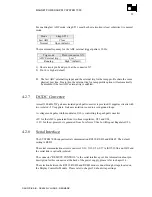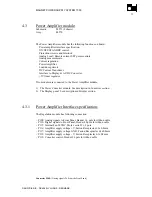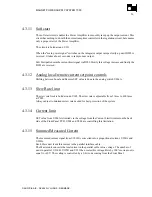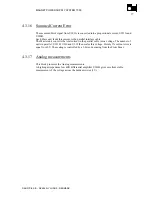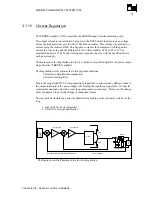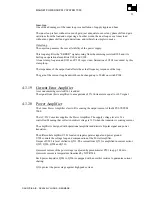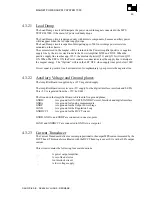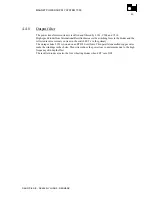
MAGNET POWER SUPPLY SYSTEM 7000
41
DANFYSIK A/S - DK 4040 JYLLINGE - DENMARK.
The Power Output Amplifier
This circuit consists of U3 and U7. The Power Output Amplifier receives a signal from the
feedback winding on the transducer head and a signal from the zero flux detectors. With these two
signals the output of U7 is driven in such a way that the secondary ampere turns of the transducer
head balances the primary ampere turns. At the same time the voltage across the secondary
winding is kept to a minimum, and by this it approaches an ideal current transformer. The primary
ampere-turns of the transducer head are the same as the output current.
The Zero Flux Detector
The Zero Flux Detector is a circuit patented by DANFYSIK. In principle it consists of U4. Those
IC's monitor if the flux inside the DCCT head is zero, and if not and error signal is produced to the
power output amplifier.
The error flux signal is monitored in two ways: a) Frequencies from Dc to 5 kHz and b)
frequencies above 5 kHz. a) ensures a excellent stabilisation in the DC area, and b) ensures a high
frequency bandwidth. The bandwidth is typically like:
-
20A DCCT:
100 KHz
The Interlock Circuit
If the compensating winding is unable to cancel the ampere turns of the primary current (typically
by overload or faulty circuit), the zero detector cores will saturate and the magnetising currents will
rise to a high value only limited by the R15, R19, R26, and R27 resistors. The average of the two
driver outputs will go low. This is then detected by U6, which drives the LED “Normal ON”, and
the opto coupler ISO1 "Normal OFF".
The transistor of the opto coupler is available for an external interlock system. At the same time
U6B switches the connection to the output amplifier from the zero detector to the bi-stable circuit
IC 7B.
The output amplifier now starts sweeping the compensating current to find the actual DCCT
current again. When the DCCT current again is below its maximum rated value, then the
compensating current will, after some time, cancel the primary ampere-turns. The cores will now
be de-saturated and the circuit will "lock in".
The interlock circuit receive an AC signal from the zero detector driver via a short circuit in the
transducer head. This signal is rectified and drives Q 4 that is part of the interlock chain.
In this way both a missing driving signal and a missing cable connection is detected.
It is made from the local +/-12V power supply interlock together with the interlocks mentioned
above.



